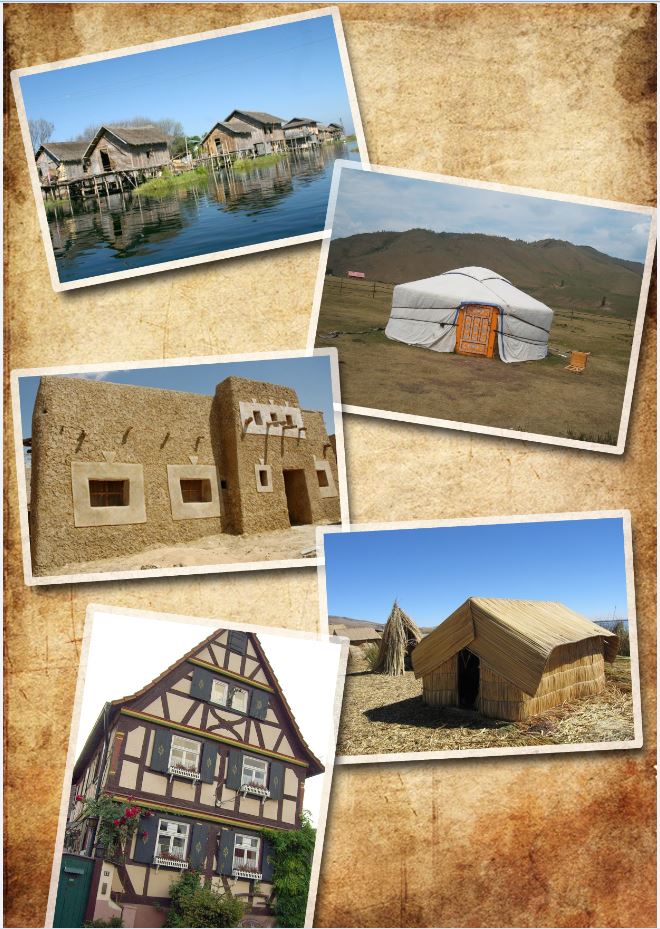
In South East Asian countries such as Malaysia, Thailand and the Philippines, there are wooden “Stilt houses” which are built about a meter above the ground or water surface. Usually built from the timber of mangrove trees (more resistant towards saline sea water when compared to an ordinary timber) or bamboo, the stilt houses allow residents convenient access to sea products as a source of food and income. They also provide a place of retreat from the hot air of the tropical climate arising from the surface of the soil. Furthermore, these “Stilt houses” keep everyone safe during the monsoon season when flooding is rather frequent.
Another exotic housing style is the Mongolian Yurt (“Ger” in Mongolian), which has existed since thousands of years ago when the Great Mongol Empire under Genghis Khan began expanding its territories towards both Europe and Asia. To best fit Mongolian’s nomadic lifestyle, Yurts are designed in such a way that they can easily be disassembled, transported and reconstructed. What is more surprising is that layers of felt and sheep’s wool as well as the waterproof canvas keep the compartment inside the Yurt warm during freezing winters and the wooden accordion frame resists against ferocious wind when built on barren plains.
In Egypt, where there is nearly no rainfall, houses resemble the geometry of a cube. The roof does not extend outwards like the typical Korean Giwajib since there is no need to stop water from flowing alongside the surface of the walls. Doors are small and windows are double-layered so that minute particles of dust and sand will not easily enter through the gaps during sandstorms. Sun-dried bricks made of mud and straw (wood is scarce) as raw materials ensure that the interior of the house is kept cool from the scorching heat outside. Owing to the fact that Egypt is located near the Mediterranean, Egyptian housing style is similar to the Greek’s -they are sometime painted in white to reflect and drive away heat as much as possible.
Reed houses built on lakes in Peru are different from houses in other countries in that they are built on reed “extensions” floating on the lake. The reed “island” as well as houses need to be replaced by new Totora reeds because the old ones in contact with water decay after a few months.
Other houses include German wooden frame houses with numerous windows, stone houses in various parts of China where there are many lime stone caves, tree houses in Philippines for protection from the wild dangerous animals and Spanish underground houses that stay cool during summer and warm during winter.
As clearly shown in these examples, the majority of houses are designed in response to environmental factors; that is, to provide a comfortable place to live in, making the best use of the resources available.
м Җмһ‘к¶Ңмһҗ © нҸ¬н•ӯкіөлҢҖмӢ л¬ё л¬ҙлӢЁм „мһ¬ л°Ҹ мһ¬л°°нҸ¬ кёҲм§Җ


